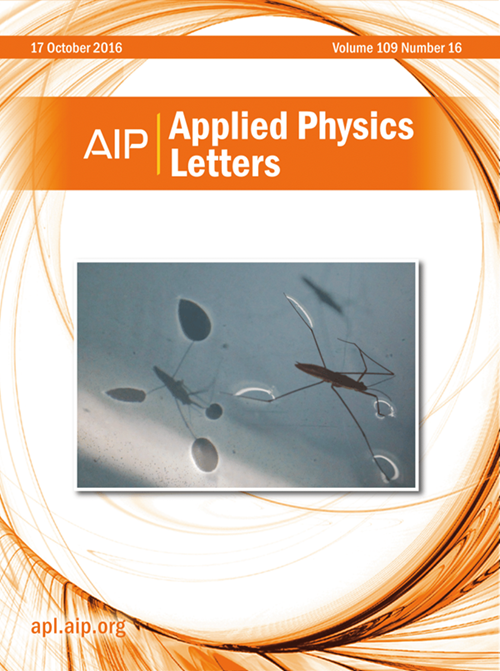降低合成反铁磁体系中离子脱落电流
IF 3.5
2区 物理与天体物理
Q2 PHYSICS, APPLIED
引用次数: 0
摘要
磁天子作为拓扑自旋织构,在下一代自旋电子应用中具有很大的潜力。人工合成反铁磁体(SAFs)中的Skyrmions特别有前途,因为它们能够抑制Skyrmions霍尔效应并实现更快的动力学,使它们对自旋电子器件具有很高的吸引力。然而,使用自旋传递转矩驱动SAF skyrmions所需的临界电流密度明显高于传统铁磁系统。在这项工作中,我们通过分析和数值证明,通过在系统内的不同层上施加不同的电流,可以显着降低SAF skyminons的临界电流密度。这种方法可以应用于saf中的周期性固定天幕,提供抑制霍尔效应和降低临界电流密度的双重好处。我们的发现为在自旋电子器件体系结构中更有效地操纵SAF空间铺平了道路。本文章由计算机程序翻译,如有差异,请以英文原文为准。
Lowering the skyrmion depinning current in synthetic antiferromagnetic systems
Magnetic skyrmions, as topological spin textures, offer great potential for next-generation spintronic applications. Skyrmions in artificially synthesized antiferromagnets (SAFs) are particularly promising due to their ability to suppress the skyrmion Hall effect and achieve faster dynamics, making them highly attractive for spintronic devices. However, the critical current density required to drive SAF skyrmions using spin-transfer torque is significantly higher than in conventional ferromagnetic systems. In this work, we analytically and numerically demonstrate that the critical current density for SAF skyrmions can be significantly reduced by applying distinct currents to different layers within the system. This approach can be applied to periodically pinned skyrmions in SAFs, offering the dual benefits of a suppressed Hall effect and a reduced critical current density. Our findings pave the way for more efficient manipulation of SAF skyrmions in spintronic device architectures.
求助全文
通过发布文献求助,成功后即可免费获取论文全文。
去求助
来源期刊

Applied Physics Letters
物理-物理:应用
CiteScore
6.40
自引率
10.00%
发文量
1821
审稿时长
1.6 months
期刊介绍:
Applied Physics Letters (APL) features concise, up-to-date reports on significant new findings in applied physics. Emphasizing rapid dissemination of key data and new physical insights, APL offers prompt publication of new experimental and theoretical papers reporting applications of physics phenomena to all branches of science, engineering, and modern technology.
In addition to regular articles, the journal also publishes invited Fast Track, Perspectives, and in-depth Editorials which report on cutting-edge areas in applied physics.
APL Perspectives are forward-looking invited letters which highlight recent developments or discoveries. Emphasis is placed on very recent developments, potentially disruptive technologies, open questions and possible solutions. They also include a mini-roadmap detailing where the community should direct efforts in order for the phenomena to be viable for application and the challenges associated with meeting that performance threshold. Perspectives are characterized by personal viewpoints and opinions of recognized experts in the field.
Fast Track articles are invited original research articles that report results that are particularly novel and important or provide a significant advancement in an emerging field. Because of the urgency and scientific importance of the work, the peer review process is accelerated. If, during the review process, it becomes apparent that the paper does not meet the Fast Track criterion, it is returned to a normal track.
 求助内容:
求助内容: 应助结果提醒方式:
应助结果提醒方式:


